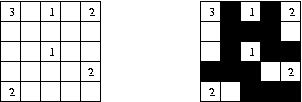前文
課程 計算型智慧 報告,這是一門碩班課程,因此聽了許多學長的報告,雖然有難有易,牽扯的領域相當繁雜且艱深,例如影像分析、電機、醫學領域 … 等,很多都是有聽沒有懂,但是多少能明白一些些道理,即使後來挑選幾個進行實作,發現自己根本沒有理解,或者只是單純實作能力不足。
其中最常見到的報告內容是 B*-tree with floor plan,對於電子電路的配置擺放,要求最小化面積的操作。當然其中也有幾個跟我報告的預測性有關。對於影響分析就不多述了,其中也有幾個電費電流調控也挺有意思的,總之報告內容相當多元。
報告的時候,教授就在台下緊盯,而我剛好是在教授開會的時候報告,這學期僅我一個在教授不在的情況下報告。
- One Exam: 30%
只有一次期中考,而且還是人腦仿電腦考試,但是題目沒有講清楚,考炸了不少,題目理解上把常數搞錯意思,但是這不影響廣義型算法,希望助教給點分!例如:在基因算法中交配的兩兩交配,難道就不能與自己交配嗎?而在粒子算法中,只給兩個參數,難道就不能只模仿全局最佳點和自己嗎?如果只有兩個參數,而且加總為一,您叫我如何模仿鄰居和自己,看來只能二選一。 - Homework: 40% (3 programs)
- Presentation: 30%
教授不在的情況下仍可以報告,所以成績是由助教評定嗎? - Questions: 3
本課程一定要問三個問題,否則視如無效修課,但是問題我總是在課堂中發問,對於學長報告的內容有點作噁不明白。
論文挑選為「Building optimal regression tree by ant colony system – genetic algorithm Application to modeling of melting points」這是一篇化學期刊上的運用,不是在計算機領域的論文。
開始
從一個最簡單的應用開始
在二十個問題內,能猜出心中想的目標角色。這一類的遊戲相當多,在很多遊戲或者是心理測驗中都會用到,用來預測你大概會是哪一種類型的人、或者正在想什麼。
http://en.akinator.com/
決策樹
決策樹的分類
- Classification Tree:分類樹
分類,輸出 “類型” - Regression Tree:回歸樹
關係程度,輸出 “數值” - CART (Classification And Regression Tree) 即上述兩個的總稱
關於 CART
- 大量數據可以快速算出結果
- 易於理解 和 解釋
- 可以用統計數據驗證模型
- 最優 CART 是 NP 問題。
- 能力有限,只能對有限數據屬性操作
- 機器學習 Machine Learning 領域常用
論文實驗資料
- 4173 種化合物,分類屬性有 202 種描述方式。在 4173 種化合物中,3000 種用來訓練,1173 種用來驗證。
- 與另外一組經由 277 種藥物進行熔點預測的 CART 相比。(另外一篇論文做的結果)
- 目標預測更加準確。
CART–ACS–GA 理論
- 將 ACS – GA 算法,套用在 CART 的建造上。
- 先說說 ACS – GA 算法運作
ACS-GA
ACS–GA 算法 (蟻群遺傳混合算法),基於 ACS 的缺點 – 收斂慢,加入 GA 算法來加快。
- 為什麼不單純使用 GA 算法就好?
- 對問題編碼的困難 (轉 DNA 的問題),突變效果可能不好
螞蟻基因也有好壞問題
- 如何反應基因好壞
- 對費洛蒙決策的方式
- 對費洛蒙的敏感度 … 等
換句話說,將螞蟻的能力也各自數據化,對於產生較好解的螞蟻,繁殖、交配、突變,接著談論如何運用在 CART!
CART 建造
假解亂做前,如何隨機?CART 是一棵二分樹
How we do ?
- 基於深度優先的方式,直到某個葉節點的分類種數 < 30 或深度大於某個值,就退回。
- 每一層必須決定 “依據哪個屬性分類” Age ? Gender ? Last R ?
- 分類時,又要按照什麼 數值 進行分割。< 30 ? > 30 ? = 30 ?
假設 CART 有 m 個節點,n 個分類描述。在此篇中,化合物有 202 種描述,即 n = 202。
- 為了表示螞蟻的判斷能力,到達某個節點 i 時,採用下一個分類方式 k 的費洛蒙 M[i][k]
i < m, k < n - 這樣可以決定分類方式。對於某個節點 i,i 可以是目前累計完成的節點個數,或者是其他。
上面決定了分類方式,但沒決定分割點 ( cut point ) 的選擇方式。
- 假設用 10 種決策方式,來對應分類到節點內有的所有項目屬性,進行統計分類。
- 決策方式 1:平均、眾數、權重、 ID3、C4.5 (熵理論和訊息增益) … 等分割策略
- 決策方式 2 : 用 10 個常數對於屬性最大最小值
f(min, max) = x0 * min + x1 * max + x2 * min * max - 決策方式 3:最大最小值之間切 10 等分。
- 費洛蒙將會有 10 × n × m,即 M[10][n][m]。
關於適應函數
對於葉節點
Partial least squares method 不同於 “最小平方法”
- 多因變數 對 多自變數 的回歸建模方法
- 對於每一個葉節點的所有資料分別做偏最小二乘法,會得到分類的相聯性,也就是 相關係數 (correlation coefficient)
- 相關係數總和大小 與 適應力高低 成正比,用 驗證集 找到相關係數。
結論
- 對於下次迭代,偏向於好的切割屬性
- 對於切割屬性,可以得到好的分割點
- 排除單一分割策略的形式













